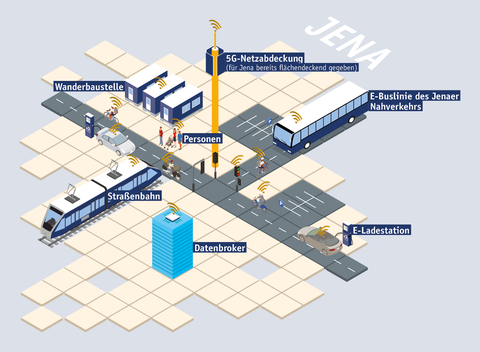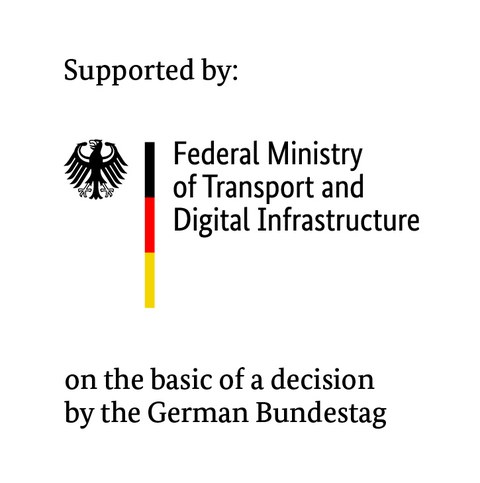5G Jena - 5G-based V2X networking to increase traffic safety and optimize multimodal transport and energy supply in Jena, Germany
Project manager: Dr.-Ing. Angelika Hirrle
Project duration: 12/2020 - 12/2023
External project partners: Hochschule Mittweida, Jenaer Nahverkehr GmbH, Stadtwerke Jena Netze GmbH, Data In Motion Consulting GmbH, INAVET GmbH
Brief description: In the project "5G-based V2X networking to increase traffic safety and optimize multimodal transport and energy supply in Jena", 5G technology is used to achieve improvements in the transport sector, especially for the environmental network.
For this purpose, a backend for data exchange, the data broker, is to be created. This will receive and communicate C-(V)2X data and also information from other data sources in real time. This data basis will enable the functionalities of the informative traffic signal system, cooperative traffic signal system, driver assistance system and collision avoidance. In this context, 5G is used for real-time data exchange as well as for the precise location of road users. The aim is for all modes of environmental transport to benefit from the applications and, in particular, to increase the safety of vulnerable road users.
Dresden University of Technology will develop a method for hybrid localization using GNSS and 5G as part of the "collision warning" subtask. The information obtained from the localization will be used to predict further movement. It must also be investigated to what extent C-V2X communication but also LSA switching times, vehicle classes, public transport occupation and for passenger exchange can improve the localization and collision warning. In a further step, it must be decided whether a collision warning should be generated and sent.
This is done by performing a risk assessment based on the predicted motion vectors. If a decision is made to send a collision warning, the communication is carried out using the low latencies and high reliability of the data transmission of the 5G network. This ensures that the safety of road users is given the best possible protection.
In the subtask "cooperative LSA", an LSA control method is developed that supports public transport as well as bicycle and pedestrian traffic and enables fast crossing at intersections for these road users.
Public transport vehicles are also guided by a driver assistance system.
The targeted insertion of short green times as opposed to fixed switching times for prioritized public transport vehicles should result in as few disadvantages as possible for the MIV.
Funding: The project is funded by the BMVI.


